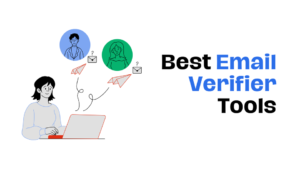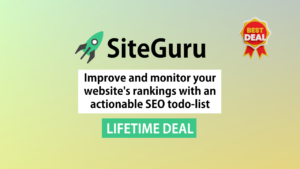Search Engine Optimization (SEO) is crucial for online success. But, it comes with its own set of challenges. Having a solid SEO strategy is essential for increasing website visibility and driving organic traffic. However, achieving high rankings on search engines and staying ahead of competitors can be difficult, especially with constant algorithm updates and changes. It’s also important to regularly analyze and track online success metrics to measure the effectiveness of SEO efforts and make adjustments as needed.
These challenges can affect your website’s visibility and ranking. SEO challenges can be overwhelming. They include algorithm updates, intense competition, and changing user behavior. Staying ahead of these challenges requires constant learning and adaptation. Understanding these obstacles can help you create better strategies. In addition to SEO challenges, there are also accounting challenges that can impact your website’s success. These challenges can include financial budgeting, tax compliance, and managing cash flow. It’s important to address these accounting challenges in order to maintain a healthy and sustainable business. By staying informed and proactive, you can ensure that your website continues to thrive despite these obstacles.
In this blog, we will explore common SEO challenges. This will help you to recognize and tackle them effectively. By doing so, you can improve your site’s performance. Let’s dive in and uncover the key hurdles in the world of SEO.
Table of Contents
ToggleCommon SEO Obstacles
Navigating the world of SEO can be tricky. There are many obstacles that can hinder your progress. Understanding these common SEO obstacles can help you stay ahead. Let’s break down two significant challenges: Keyword Competition and Algorithm Changes.
Keyword Competition
Keyword competition is one of the biggest obstacles in SEO. Many businesses aim for the same popular keywords. This makes it tough to rank high on search engines. In many cases, the level of competition for a keyword directly correlates to its difficulty. In turn, this can make it more challenging for businesses to achieve a high ranking for their targeted keywords. As a result, it is crucial for businesses to conduct thorough keyword research and identify less competitive long-tail keywords to improve their chances of ranking well on search engine results pages. By understanding keyword difficulty, businesses can better strategize their SEO efforts and optimize their website for improved search visibility.
To overcome this, focus on long-tail keywords. These are more specific phrases that attract targeted traffic. For example:
- Instead of “shoes,” use “comfortable running shoes for women.”
- Instead of “SEO tips,” use “SEO tips for small businesses.”
Using long-tail keywords can reduce competition and improve your ranking.
Algorithm Changes
Search engine algorithms change frequently. These changes can impact your site’s ranking. Staying updated with these algorithm changes is crucial.
Here are some tips to stay updated:
- Follow SEO news websites.
- Join SEO forums and communities.
- Subscribe to industry newsletters.
Regularly reviewing your site’s SEO performance can help you adapt quickly. Keep an eye on your analytics and make necessary adjustments.

Credit: www.semrush.com
Technical SEO Issues
Technical SEO can be daunting. It involves making sure your website is in top shape for search engines. Ignoring these issues can hurt your ranking. Below, we discuss two key technical SEO challenges: site speed and mobile optimization.
Site Speed
Site speed is crucial. A slow site frustrates users. They leave and don’t return. Search engines notice this. They rank fast sites higher. Use tools like Google PageSpeed Insights to check your speed. Improve it by optimizing images and using a Content Delivery Network (CDN). Below are some tips to boost your site speed:
- Compress images to reduce their size.
- Minimize HTTP requests.
- Enable browser caching.
- Use asynchronous loading for CSS and JavaScript files.
Mobile Optimization
Mobile optimization is now essential. More people use phones to browse the web. Google uses mobile-first indexing. This means it looks at the mobile version of your site first. If your site isn’t mobile-friendly, your ranking drops. Make sure your site is responsive. It should look good on all devices. Here are some ways to ensure mobile optimization:
- Use responsive design.
- Ensure buttons and links are easy to tap.
- Test your site on various devices.
- Optimize images and videos for mobile.
Addressing these technical SEO issues can improve your site’s performance. It can also enhance user experience. Both are vital for better search engine rankings.
Content Quality
Content Quality is a critical factor in SEO. High-quality content can drive traffic, engage readers, and improve search rankings. But maintaining quality content involves tackling several challenges. Two major issues are Duplicate Content and Thin Content.
Duplicate Content
Duplicate Content can harm your SEO efforts. Search engines get confused when they find similar content on multiple pages. They cannot decide which page to rank higher.
This issue can arise from:
- Product descriptions repeated across pages.
- Printer-friendly versions of web pages.
- Copied content from other websites.
To avoid this, use canonical tags. They help search engines understand the original source. Also, keep track of your content with plagiarism checkers.
Thin Content
Thin Content refers to pages with little or no valuable information. These pages offer poor user experience and fail to engage visitors.
Thin content can result from:
- Poorly written articles.
- Pages filled with ads and no real content.
- Automated content created by bots.
To combat thin content, focus on creating detailed, useful, and engaging articles. Ensure every page adds value to your audience.
| Issue | Solution |
|---|---|
| Duplicate Content | Use canonical tags, track content with plagiarism checkers. |
| Thin Content | Create detailed, useful, and engaging articles. |
Backlink Challenges
Backlinks are crucial for SEO success. But they come with challenges. It’s vital to acquire quality links and avoid spam. Let’s delve into these challenges.
Acquiring Quality Links
Getting quality backlinks is tough. Not all links are equal. Search engines value links from reputable sites. These links boost your site’s credibility. But how do you get them?
- Create high-quality content.
- Reach out to influencers in your niche.
- Guest post on reputable blogs.
Creating valuable content helps. People are more likely to link to useful articles. Building relationships is also key. Influencers can help spread the word. Guest posting is another great strategy. It allows you to tap into established audiences.
Avoiding Spam Links
Spam links can harm your SEO. Search engines penalize sites with spammy backlinks. It’s crucial to avoid them. But how can you do this?
- Monitor your backlink profile.
- Disavow harmful links.
- Focus on quality over quantity.
Regularly check your backlinks. Use tools like Google Search Console. Identify and disavow harmful links. Always prioritize quality. A few high-quality links are better than many low-quality ones.
Backlink challenges are real. But with the right strategies, you can navigate them successfully. Focus on quality and stay vigilant against spam.
Local SEO Barriers
Local SEO is crucial for small businesses. It helps attract nearby customers. But several challenges can hinder success. These barriers can affect visibility and rankings. Let’s dive into some common local SEO barriers.
Nap Consistency
NAP stands for Name, Address, and Phone Number. These details must be consistent across all platforms. Inconsistent NAP information can confuse search engines. It may harm your local search rankings.
| Platform | Correct NAP | Incorrect NAP |
|---|---|---|
| Google My Business | John’s Bakery, 123 Main St, 555-1234 | John’s Bakery, 123 Main St, 555-4321 |
| Yelp | John’s Bakery, 123 Main St, 555-1234 | Johns Bakery, 123 Main St, 555-1234 |
Make sure your NAP details match everywhere. Check your website, social media, and directories. A small difference can cause big problems.
Local Reviews
Local reviews impact your business reputation. They influence potential customers’ decisions. Positive reviews can boost your rankings. Negative reviews can do the opposite.
- Encourage satisfied customers to leave reviews.
- Respond to all reviews, both positive and negative.
- Address complaints politely and offer solutions.
Use a review management tool to track and respond to reviews. Regularly engage with your reviewers. This shows that you care about customer feedback.
Keep building a strong online presence. This will improve your local SEO over time.

Credit: www.grademywebsite.com
User Experience
User experience (UX) plays a crucial role in SEO. It impacts how visitors interact with your site. Good UX can improve your search rankings. Poor UX can hurt them. Let’s explore two major UX factors: Bounce Rate and Dwell Time.
Bounce Rate
Bounce rate is the percentage of visitors who leave your site after viewing one page. A high bounce rate indicates visitors are not finding what they want. This can negatively affect your search rankings.
To reduce your bounce rate:
- Ensure fast loading times.
- Provide clear navigation.
- Offer relevant and engaging content.
Here’s a table showing common causes of high bounce rates and solutions:
| Cause | Solution |
|---|---|
| Slow loading pages | Optimize images and scripts |
| Poor mobile experience | Use responsive design |
| Confusing navigation | Simplify menu structure |
Dwell Time
Dwell time is the amount of time a visitor spends on your site before returning to the search results. Longer dwell times suggest that visitors find your content valuable.
To increase dwell time:
- Create high-quality, informative content.
- Use engaging multimedia like videos and images.
- Ensure your content is easy to read and understand.
Measuring Success
Measuring the success of your SEO efforts can be tricky. Understanding the right metrics and tools is key. Let’s break down how you can effectively measure your SEO success. One of the most important SEO metrics to track is organic traffic. This measures the number of visitors that find your website through search engine results, which indicates how well your SEO efforts are performing. Another crucial metric is keyword rankings, which show how well your website is ranking for specific keywords in search engine results. By regularly monitoring these SEO metrics, you can gain valuable insights into the effectiveness of your SEO strategies and make necessary adjustments to improve your rankings and drive more organic traffic to your site.
Analytics Tools
Using the right analytics tools is essential. These tools help you track important data points. Popular tools include Google Analytics, SEMrush, and Ahrefs. Each tool offers unique features to analyze your SEO performance.
Google Analytics provides detailed insights into website traffic. It helps you understand where your visitors come from. SEMrush and Ahrefs offer advanced keyword tracking and backlink analysis.
Consider using multiple tools for comprehensive insights. This approach ensures no data point goes unnoticed.
Key Metrics
Focus on key metrics to measure success. Here are the most important ones:
- Organic Traffic: Number of visitors arriving from search engines.
- Keyword Rankings: Position of your target keywords in search results.
- Backlinks: Number and quality of links pointing to your site.
- Bounce Rate: Percentage of visitors leaving your site quickly.
- Conversion Rate: Percentage of visitors taking desired actions.
Each metric provides different insights. For instance, high organic traffic indicates good visibility. Low bounce rate suggests engaging content.
Track these metrics regularly. Compare the data over time to spot trends. Adjust your strategy based on these insights.
| Metric | Description |
|---|---|
| Organic Traffic | Visitors from search engines |
| Keyword Rankings | Position of keywords in search results |
| Backlinks | Links pointing to your site |
| Bounce Rate | Visitors leaving quickly |
| Conversion Rate | Visitors taking desired actions |
Regular monitoring is crucial. Use the data to refine your SEO strategy. Aim for continuous improvement.
Staying Updated
Staying Updated in the ever-evolving world of SEO can be a daunting task. New algorithms, changing user behaviors, and emerging technologies constantly shape the landscape. This section delves into the challenges of keeping pace with these rapid changes.
Industry Trends
The SEO industry is dynamic. Trends shift rapidly, influenced by search engine updates and user preferences. Staying current with industry trends is crucial for maintaining visibility.
Key trends to monitor include:
- Algorithm updates: Google frequently updates its algorithms. Each update can impact rankings.
- Voice search: More users are using voice search. Adapting to this trend is essential.
- Mobile-first indexing: Google prioritizes mobile-friendly websites. Ensuring your site is mobile-optimized is critical.
Continuous Learning
SEO professionals must engage in continuous learning to stay ahead. The field is too dynamic for static knowledge.
Here are effective ways to keep learning:
- Online courses: Platforms like Coursera and Udemy offer specialized SEO courses.
- Webinars: Attend webinars hosted by SEO experts to gain insights.
- Blogs and forums: Follow top SEO blogs and participate in forums to exchange knowledge.
A commitment to continuous learning ensures you stay relevant. Adaptation is key in the fast-paced SEO world.
Credit: blog.hubspot.com
What are the main obstacles in boosting SEO rankings and how can SEO tools help overcome them?
When it comes to boosting SEO rankings, the main obstacles often include fierce competition, ever-changing search engine algorithms, and lack of targeted keywords. However, utilizing top seo tools comparison for boosting can help overcome these obstacles by providing valuable insights, analyzing competitor strategies, and optimizing keywords for better ranking.
How Do SEO Metrics Help in Overcoming Challenges and Boosting Rankings?
Unlocking the secrets to online success with seo is vital in improving website rankings. By analyzing SEO metrics such as organic traffic, keyword rankings, and backlinks, businesses can identify challenges and develop strategies to overcome them. Utilizing these metrics can lead to improved visibility and higher SERP rankings. One important aspect of SEO metrics is link building tools. These tools help businesses track the quality and quantity of backlinks to their website, which is essential for improving search engine rankings. By utilizing link building tools, businesses can identify opportunities to enhance their backlink profile and ultimately improve their website’s overall SEO performance.
Frequently Asked Questions
What Are Common SEO Challenges?
Common SEO challenges include keyword competition, algorithm updates, and technical issues. Staying updated with trends is crucial.
How Do Algorithm Updates Affect SEO?
Algorithm updates can change rankings significantly. They require constant monitoring and adaptation to maintain visibility.
Why Is Keyword Competition An SEO Challenge?
High keyword competition makes it harder to rank. It requires strategic planning and unique content to stand out.
How Can Technical Issues Impact SEO?
Technical issues like slow loading times and broken links hurt rankings. Regular audits help identify and fix these problems.
How Can Overcoming Website Ranking Issues Improve SEO Challenges?
Overcoming website ranking issues can significantly boost your website ranking issues and improve SEO challenges. Addressing technical SEO issues, creating high-quality content, and optimizing website speed can all contribute to better ranking and improved search engine visibility. By tackling these issues, you can elevate your website’s performance and attract more organic traffic.
Conclusion
Facing SEO challenges is a common struggle for many. Solutions exist. Keep strategies updated. Analyze results frequently. Adapt to changes in search engine algorithms. Focus on quality content. Engage your audience with useful information. Stay patient and persistent. Results may take time, but they will come.
Your effort will pay off. Keep learning and improving. Success in SEO is a journey, not a destination.








